 |
| |
| |
WE FEEL HAPPY WHEN YOU HAVE FREE FLOW OF URINE |
| |
|
| |
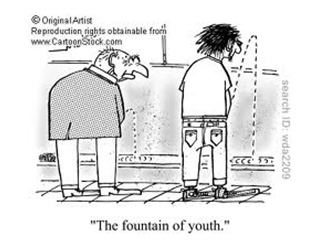 |
| |
|
| |
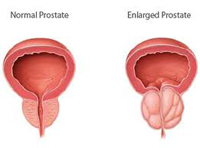 What is Prostate Gland ? What is Prostate Gland ?
The prostate is a walnut –sized gland that forms part of the male reproductive system. The gland is made of two lobes or regions enclosed by an outer layer of tissue . The prostate is located in front of the rectum and just below the bladder, where urine is stored. The prostate also surrounds the urethra, the tube through which urine passes out of the body. |
| |
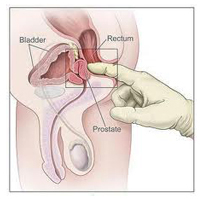
What is benign prostatic hyperplasia ?
Benign prostatic hyperplasia is non-malignant(noncancerous) enlargement of the prostate gland , a common occurrence in older men. |
| |
What Causes BPH ?
It is a physiological change with aging. As a man grows older, the prostate increases in size. It is thought that the growth result from increased levels of male hormones such as testosterone. Testosterone is produced throughout a man’s life and subsequently the prostate grows throughout a man’s life.
Due to slow progression of this growth, most men do not notice any symptoms of BPH until they are older and prostate has grown to such a size that it impinges on the outflow of urine from bladder. |
| |
What are the symptoms of BPH ?
The prostate is located at the junction of the bladder and the urethra (which is thin tube that carries urine from the bladder, through the penis, to outside the body). As the prostate enlarges, it impinges the flow of urine through the urethra.
The most common symptoms are :
- Frequent urination, particularly at night(i.e.,nocturia)
- Recurrent, sudden, urgent need to urinate
- Hesitant interrupted, or weak urine stream caused by decreased force.
- Pushing or straining to begin urination
- Feeling that bladder has not emptied completely after urination.
- Dribbling after voiding
- Blood in the urine (i.e., hematuria),caused by straining to void
- Leakage of urine (i.e., overflow incontinence)
Treatment option:
The options may range from ‘wait and watch’, drug therapies, surgery, or some combination. Your doctor will recommend a treatment course that best fits with your individual situation and disease. Drug therapy includes tamsulosin, alfuzosin, dutasteride , or combinations as well.
My doctor recommends surgery………
There are certain indications for surgery which the treating doctor decides. Only enlarged prostate gland does not necessarily mean surgery. If it leads to acute urinary retention, recurrent urinary tract infection, bladder stone, renal failure, then surgery may be required.There are different surgical procedures available and your doctor will be happy to explain the procedure and risk associated. For example, if you have BPH, he may recommend holmium laser procedure called holmium laser enucleation of prostate(HOLEP)or transurethral resection of the prostate(TURP),these are two highly effective procedures that remove the enlarged prostate gland tissue. |
| |
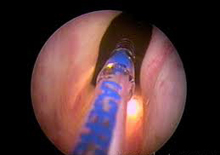
Holmium Laser Enucleation Of Prostate
Holmium Laser Enucleation Of Prostate (HOLEP) has emerged as a safe and effective BPH treatment option. HOLEP involves enuclation on the median lobe, followed by the lateral lobes .The lobes are placed into the bladder for removal by morcellation. Prostate size is not limitation for this technique. Minimal blood loss, less catheter time, lesser hospital stay are some advantages of this procedure. |
| |
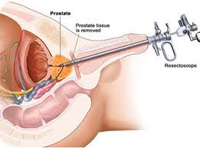 Transurethral Resection Of The Prostate(TURP) Transurethral Resection Of The Prostate(TURP)
A surgeon inserts a narrow instrument (resectoscope) into the urethra and uses small cutting loops to scrape away excess prostate tissue. Patients can be expected to stay in the hospital up to three days after surgery.
Post operative problems:
Bleeding, incontinence, retrograde ejaculation. |
| |
What is a kidney stone ?
A kidney stone is a solid piece of material that from in a kidney out of substances in the urine. kidney stone may be as small as a grain of sand or as a pearl. Some stone are even as big as golf balls. Stones may be smooth or jagged .They are usually yellow or brown.
A stone may stay in the kidneys or break loose and travel down the urinary tract. A small stone may pass all the way out the body without causing too much pain.
A large stone may get stuck in a ureter, the bladder ,or the urethra and can block the flow of urine causing great pain.
What causes kidney stones ?
A person with a family history of kidney stone may be more likely to develop stones. Urinary tract infections, kidney disorders such as hyperparathyroidism are also linked to stone formation.
Other causes of kidney stones are hyperuricosuria, which is a disorder of uric acid metabolism :gout: excess intake of bitamin D:urinary tract infections: drinking less fluids and blockage of the urinary tract.
What are the symptoms of kidney stone ?
Many kidneys stones don’t move and are too small to cause any symptoms. However, if a kidney stone cause a blockage, or moves into your ureter, you may:
- Have severe pain or ache on one or both side of your back
- Get sudden spasms of excruciating pain –this usually starts in the back below your ribs, before radiating around your abdomen, and sometimes to your groin and genitals.
- Have bloody or cloudy urine
- Feel sick or vornit
- Feel a frequents urge to urinate ,or a burning sensation during urination.
- Get fever and chills
Diagnosis
If a doctor suspects stones , diagnosis is usually confirmed via a special CT scan, an ultrasound or a special X-ray test.
Treatment options
Specialists evaluate each patient’s need for stone treatment , and recommend measures to prevent additional stones from forming. Watchful waiting is the most common treatment , as most stone are small enough to pass on their own. Your doctor may recommend a variety of treatment options depending on type and location of stones. Your doctor will recommend a treatment course that best fits with your individual situation and disease. |
| |
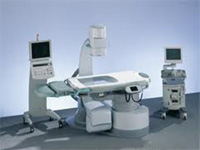 Extracorporeal shock wave lithotripsy (ESWL) Extracorporeal shock wave lithotripsy (ESWL)
This procedure is the usual treatment to remove stone about 1 to 2 centimeter or smaller. The stones are shattered by way of applying external shocks. The fragmented stones pass through the urine. Some stone may not shatter completely and may require another sitting . |
| |
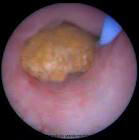 Percutaneous nephrolithotomy Percutaneous nephrolithotomy
If the kidney stone is very large , a surgeon may remove it through a small hole in the back, using a nephroscope.
Ureteroscopic stone removal
This procedure is used to remove stone that are lodged in a ureter .The surgeon passes a small ureteroscope through the bladder into the ureter and the stone is fragmented by LASER. |
| |
Why holmium laser surgery ?
Holmium LASER fragments all kinds of stones irrespective of size and composition. This unique device allows stone fragmentation with increased precision literally transforming stone into dust. For you it offers multiple benefits:
- Gets rid of stones in a single treatment.
- Faster healing times
- Less post operative pain
|
| |
|
|
|